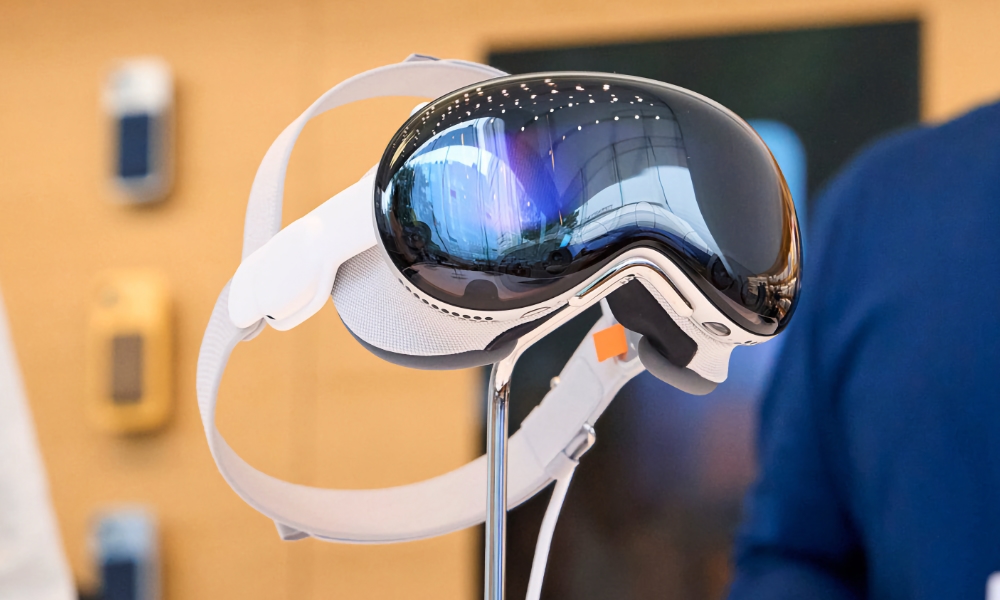Would You Pay $2,000 for an Apple ‘Vision’ Headset?

Toggle Dark Mode
While we’ve known from the start that the Vision Pro wouldn’t always be a $3,500 headset, Apple will likely have to cut some corners to make a more affordable version. If recent reports are true, we could see that arrive next year, but “more affordable” doesn’t necessarily mean “cheap.”
That’s according to Bloomberg’s Mark Gurman, who shared in this week’s Power On newsletter that Apple is continuing its work on the lower-cost “Apple Vision” headset and several other products to respond to Meta’s Quest 3S and other products that Facebook’s parent company has in the works.
While Apple is also continuing work on its flagship Vision Pro, which could land in 2026 with an M5 chip and Apple Intelligence support, the company’s more pressing priority is a lower-cost version that it hopes to get on the market by the end of next year.
There’s been a fair bit of speculation about what this “Apple Vision” might look like, but Gurman’s sources suggest the company is aiming for a $2,000 price tag, which still puts it at about 6-7 times the cost of the Quest 3S.
As for the compromises Apple will need to make to get there, Gurman suggests that it will “probably use an inferior processor and cheaper materials” and lack the EyeSight feature, which shows the user’s eyes on the outside while they’re wearing the headset.
EyeSight has been a somewhat controversial feature since the Vision Pro launched. While some find it unnatural and even a bit creepy, it was a concession pushed for by some of Apple’s senior executives, including former Chief Designer Jony Ive, who insisted early on that the headset not isolate the wearer from the world around them. However, it’s also an expensive addition since it requires an external OLED display to show this off. Ive has long since moved on from Apple, and it’s hard to say how many people share his opinion on the necessity of EyeSight for the user experience.
Apple may also simplify the camera array, perhaps omitting features like Spatial Videos and Photos. That would be a reasonable tradeoff considering that Apple’s entire iPhone 16 lineup can now capture these, and most folks are more likely to have their iPhone on a special occasion than wearing their Vision Pro.
The Vision would likely also use lower-resolution screens on the inside, plus lighter materials that would make it more comfortable to wear for extended periods — something Apple is reportedly also working on for the second-generation Apple Vision Pro.
As for the chip, the current Vision Pro uses an M2 chip, so the “inferior” silicon that Gurman mentions would presumably be something lower-spec’ed than that. Apple could go with its 2020 M1 chip or adopt an A-series chip like the A17 Pro or one of the A18 chips, which will be a generation old by the time the Vision headset launches. The lower-cost headset could also embrace the M2 chip if it launches alongside a second-generation Vision Pro with an M5 chip inside.
Apple is reportedly hoping that the lower price tag will help it sell twice as many Apple Vision headsets, but as Gurman points out, that’s not saying much. As things stand now, Apple is on track to sell around 400,000 Vision Pro headsets by the end of this year, with other analysts also predicting that a lower-cost version would “rekindle interest” in the platform next year and result in sales of 350,000 units when it launches in Q4 2025.
[The information provided in this article has NOT been confirmed by Apple and may be speculation. Provided details may not be factual. Take all rumors, tech or otherwise, with a grain of salt.]








